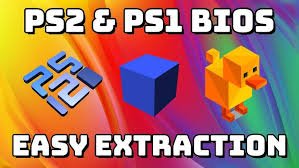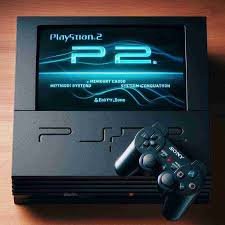The PS2 BIOS is a key component required for PlayStation 2 emulation. Without it, even the most advanced emulator software can’t function properly. Whether you’re new to emulation or looking to fine-tune your setup, understanding the purpose, legality, and use of the PS2 BIOS is 23win.
In this article, we’ll break down everything you need to know about the PS2 BIOS—what it is, how it works, how to get it, and how to set it up in an emulator like PCSX2. With clear guidance and no unnecessary jargon, this article is your go-to resource for all things related to the PS2 BIOS.
Table of Contents
What is the PS2 BIOS and why it’s important
The PS2 BIOS (Basic Input/Output System) is the firmware that powers the original Sony PlayStation 2. It’s stored on a ROM chip inside the console and acts as the system’s operating system. It initializes hardware, reads game discs, manages memory cards, and provides access to system thể thao 23win.
In emulation, the PS2 BIOS is used to replicate these exact same functions on a computer or other device. The emulator mimics the console’s hardware, but it still needs the BIOS to control how everything runs. Without the PS2 BIOS, an emulator can’t boot or run any games.
How the PS2 BIOS functions within an emulator

When you load the PS2 BIOS into your emulator (typically PCSX2), it provides the system-level operations necessary to simulate the PS2 environment. The BIOS is responsible for:
- Booting up the virtual console
- Reading ISO images or disc files
- Accessing memory card data
- Displaying the original PS2 system menu
- Managing regional compatibility
By using the PS2 BIOS, emulators can closely replicate the user experience of the original PlayStation 2 console.
Why you can’t skip using the PS2 BIOS
There are no workarounds or shortcuts—the PS2 BIOS is required for emulation. While other consoles, like NES or SNES, might work with software-only emulators, the complexity of the PS2 makes the BIOS mandatory. Without it, your emulator simply won’t boot.
Some unofficial emulators have attempted to replace the PS2 BIOS with reprogrammed code, but these are either unreliable, unstable, or outright illegal. The safest and most effective method is using the official PS2 BIOS from a console you legally own.
Legality of the PS2 BIOS and how to get it
One of the most frequently asked questions is whether it’s legal to download the PS2 BIOS. The answer: no, it’s not legal to download the BIOS from the internet, even if you own a PS2. The PS2 BIOS is copyrighted software, and sharing it is against Sony’s terms.
However, it is legal to extract or “dump” the BIOS from your own PlayStation 2. Here’s how to do it:
- Get a PS2 and a USB stick.
- Install Free McBoot (FMCB) on a memory card, which allows you to run unsigned software.
- Launch uLaunchELF, a file manager program.
- Use a BIOS dumper utility to copy the BIOS from the console to your USB stick.
- Transfer the BIOS file (e.g.,
scph39001.bin) to your PC.
This method keeps you fully legal and gives you a clean, reliable copy of the PS2 BIOS.
Different versions of the PS2 BIOS and regional compatibility
There are several versions of the PS2 BIOS, each tied to a specific console model and region:
- NTSC-U (North America)
- NTSC-J (Japan)
- PAL (Europe and Australia)
Each version may behave slightly differently. Some games are region-locked, meaning they require a BIOS that matches the game’s regional encoding. For best compatibility, it’s a good idea to have multiple BIOS versions available in your emulator’s folder, if you own consoles from different regions.
Installing and configuring the PS2 BIOS in an emulator

Once you’ve legally dumped your PS2 BIOS, the next step is to install it into your emulator. Here’s how to do it using PCSX2:
- Download PCSX2 from the official website and install it.
- Open the PCSX2 BIOS folder, typically found in the installation directory.
- Paste your BIOS file (e.g.,
scph10000.bin) into the folder. - Launch PCSX2 and follow the setup wizard.
- Select the BIOS file from the list shown during configuration.
- Complete the configuration and start using the emulator.
Once installed, your emulator should boot into the classic PS2 startup menu, just like the real console.
Common problems with the PS2 BIOS and how to fix them
Even with the correct PS2 BIOS, users sometimes face errors. Here are common issues and fixes:
- BIOS not detected: Make sure the BIOS is not inside a ZIP or RAR file and is in the correct directory.
- Corrupt BIOS file: If your emulator crashes, try re-dumping your BIOS using the correct method.
- Wrong BIOS version: If a game won’t run, try using a BIOS that matches the game’s region.
- Multiple BIOS files: Organize your BIOS files with clear names like
bios_us.binorbios_jp.bin.
Taking a few minutes to double-check these details can save you hours of troubleshooting.
Benefits of using an authentic PS2 BIOS
Using the real, unmodified PS2 BIOS has many benefits beyond legality:
- Maximum compatibility with commercial and homebrew games
- Accurate system behavior, including menus, memory card operations, and date/time settings
- Fewer crashes or unpredictable errors during gameplay
- Full access to emulator features like save states and video settings
Fake or modified BIOS files often lead to instability and can break game functionality. An official dump from your own console is always the safest and most reliable option.
What makes the PS2 BIOS essential for gaming preservation
Beyond practical use, the PS2 BIOS plays a role in preserving gaming history. Emulation enables users to play and preserve classic games that are no longer available or sold. Having an accurate, authentic BIOS allows games to run as they were originally designed—something that’s critical for game archivists and enthusiasts.
Furthermore, having a correct BIOS ensures that games run at their intended resolution, frame rate, and sound quality, offering an experience nearly identical to real hardware.
Also read Kathleen Nimmo Lynch Life, Role, and Public Journey
Conclusion: The PS2 BIOS is the foundation of emulation
The PS2 BIOS is the backbone of any PlayStation 2 emulation setup. It’s not optional—it’s essential. Without it, no emulator can function properly. It’s the bridge between your PC and the authentic PS2 experience.
To use the PS2 BIOS responsibly, dump it from your own console and follow legal guidelines. Once set up correctly, your emulator will give you access to the entire PS2 game library with high compatibility and stability. Whether you’re revisiting old classics or discovering hidden gems, the PS2 BIOS makes it all possible.
By understanding its role, handling it legally, and setting it up properly, you’re not only enjoying games—you’re also preserving the legacy of one of the greatest gaming consoles ever made.







Got a Questions?
Find us on Socials or Contact us and we’ll get back to you as soon as possible.